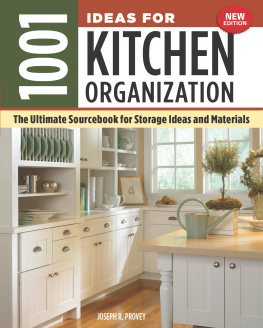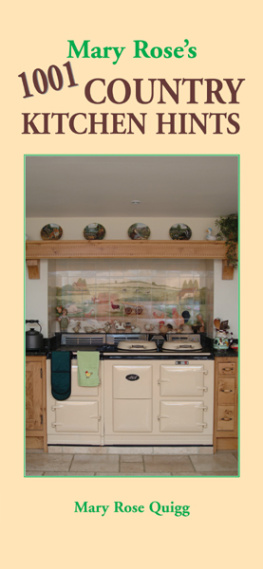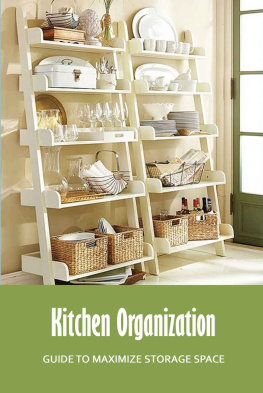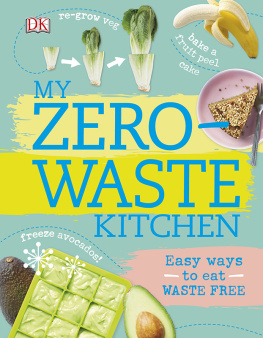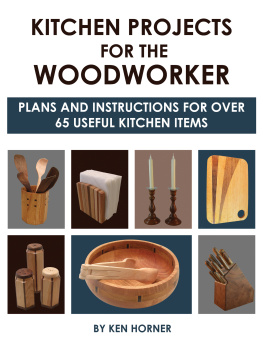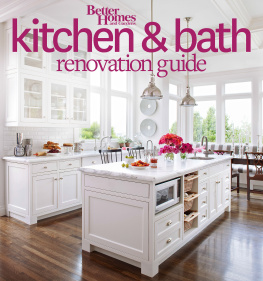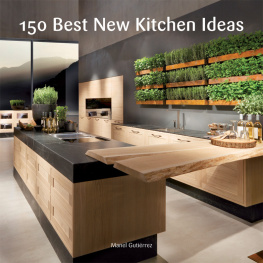Toc
Guide




Copyright 2007, 2020 Creative Homeowner
This book may not be reproduced, either in part or in its entirety, in any form, by any means, without written permission from the publisher, with the exception of brief excerpts for purposes of radio, television, or published review. All rights, including the right of translation, are reserved. Note: Be sure to familiarize yourself with manufacturers instructions for tools, equipment, and materials before beginning a project. Although all possible measures have been taken to ensure the accuracy of the material presented, neither the author nor the publisher is liable in case of misinterpretation of directions, misapplication, or typographical error.
Creative Homeowner is a registered trademark of New Design Originals Corporation.
1001 Ideas for Kitchen Organization, New Edition
Editor: Colleen Dorsey
Technical Editor: David Schiff
Designer: John Hoch
Print ISBN 978-1-58011-844-6
eISBN: 978-1-60765-741-5
Library of Congress Control Number: 2019948120
We are always looking for talented authors. To submit an idea, please send a brief inquiry to .
Creative Homeowner, www.creativehomeowner.com, is an imprint of New Design Originals Corporation and distributed exclusively in North America by Fox Chapel Publishing Company, Inc., 800-457-9112, 903 Square Street, Mount Joy, PA 17552, and in the United Kingdom by Grantham Book Service, Trent Road, Grantham, Lincolnshire, NG31 7XQ.
Acknowledgments
Thank you to the many kitchen designers, photographers, and kitchen-storage product manufacturers that made this book possible. Special thanks to Mary Jane Pappas, CID, ASID, of Pappas Inc., Minneapolis, Minnesota, for sharing her kitchen storage and organization wisdom. Thanks, also, to Kathie Robitz, the editor of 1001 Ideas for Kitchen Organization, for her input and encouragement and for being a pleasure to work with, as always.

Contents




Whether youre planning a complete kitchen remodeling or reorganizing the kitchen you already have, improving your storage and organization can save time, effort, and money every time you use it.
Introduction
When most of you think of good kitchen design, you probably think of fabulous appliances, gorgeous cabinetry, and beautiful floors and countertops. But theyre not the half of itthough they will collectively claim the lions share of your budget. Good kitchen design is about two far-less-glamorous ingredients: organization and storage.
Just consider the benefits: smart storage and organization can save you enormous amounts of time and effort every week. Whether youre making a school lunch or preparing a dinner party, having what you need where you need it will speed up the task. Imagine: no more digging around in a jam-packed drawer for a knife to cut the sandwich or sorting through a pile of clippings for a favorite recipe.
A well-ordered kitchen, in which working is a pleasure, is also one where youre more likely to spend time working. In wan era when many parents rely on fast food to feed their families, more meals at home can mean more nutritious, healthier dietsnot to mention saving thousands of dollars a year on eating out.
Your Storage Style
No, the issue is not whether you prefer country to contemporary. Storage styles have to do with more fundamental preferences. Do you want a kitchen where, at days end, everything is stowed away in drawers or behind cabinet doors? Or do you find that functional items are a pleasure to look at and prefer to have everything in the open where you can admire them? Or perhaps you are somewhere in between? Sometimes such preferences are personal. Other times there are simple reasons. If, for example, you have an open floor plan and dont want to see pots and pans while relaxing in the family room, an out-of-sight approach to storage may be your choice. On the other hand, if your hobby is cooking and you like your tools within easy reach, without having to open a door or drawer, open storage may be the answer. Julia Child famously kept her pots and pans hanging in the open on pegboard. Most homeowners prefer a bit of both, hiding some items in cabinets and putting others on open shelves, hooks, or racks. Nevertheless, think about the storage style that best suits you. The approach you choose will affect many of the design decisions that youll have to make during the course of your kitchen remodeling or reorganization.

Todays open-plan kitchens feature islands that increase storage and counter space. But they rely on traditional elements, too, including cabinets, shelves, and baskets.

This kitchen, inspired by country kitchens of the past, makes good use of hooks, pegs, baskets, and narrow shelves.

Opposite Contemporary design subscribes to the belief that everyday objects should be beautifuland visible. Glass cabinet door-and-drawer fronts, as well as backsplash railand-hook systems, do the trick.
Kitchen Evolution
Before the Industrial Revolution, the kitchen was a very different place. Centered on an open hearth, kitchenware was homemade or handcrafted by the town blacksmith and other local craftsmen. Families had relatively few kitchen implements. Storage was less of an issue than it is todaya few shelves could handle much of the typical kitchens contents. Many foods were stored outside the kitchen in larders, smokehouses, and root cellars. In the early nineteenth century, however, technological advances and mass production changed things. The iron range displaced the hearth. Cooking tools became less expensive and multiplied in number. The kitchen also had greater demands placed upon it. Iceboxes displaced root cellars and brought food storage into the house. Mass-produced jars and tins allowed for new methods of food preservationand new demands for storage in the kitchen. The advent of modern cooking fuels (gas in 1860 and electricity by the end of the century) ushered in a new era in kitchen appliances. The evolution of the kitchen continues today. The average homeowner has hundreds of items that need a home. Cabinet systems have evolved to hold this trove and to keep it manageable. In addition, manufacturers have devised hundreds of ways to store the overflow on walls and ceilings, under cabinets, and in every empty corner imaginable. Appliance manufacturers, for example, offer their wares in every size and configuration, allowing you to put only what you use most where you need it most. Split fridges and freezers, for example, allow you to put the fridge where its handy, without gobbling up prime real estate with a less-used freezer. Many appliances can now perform multiple tricks, another space-conserving opportunity.

